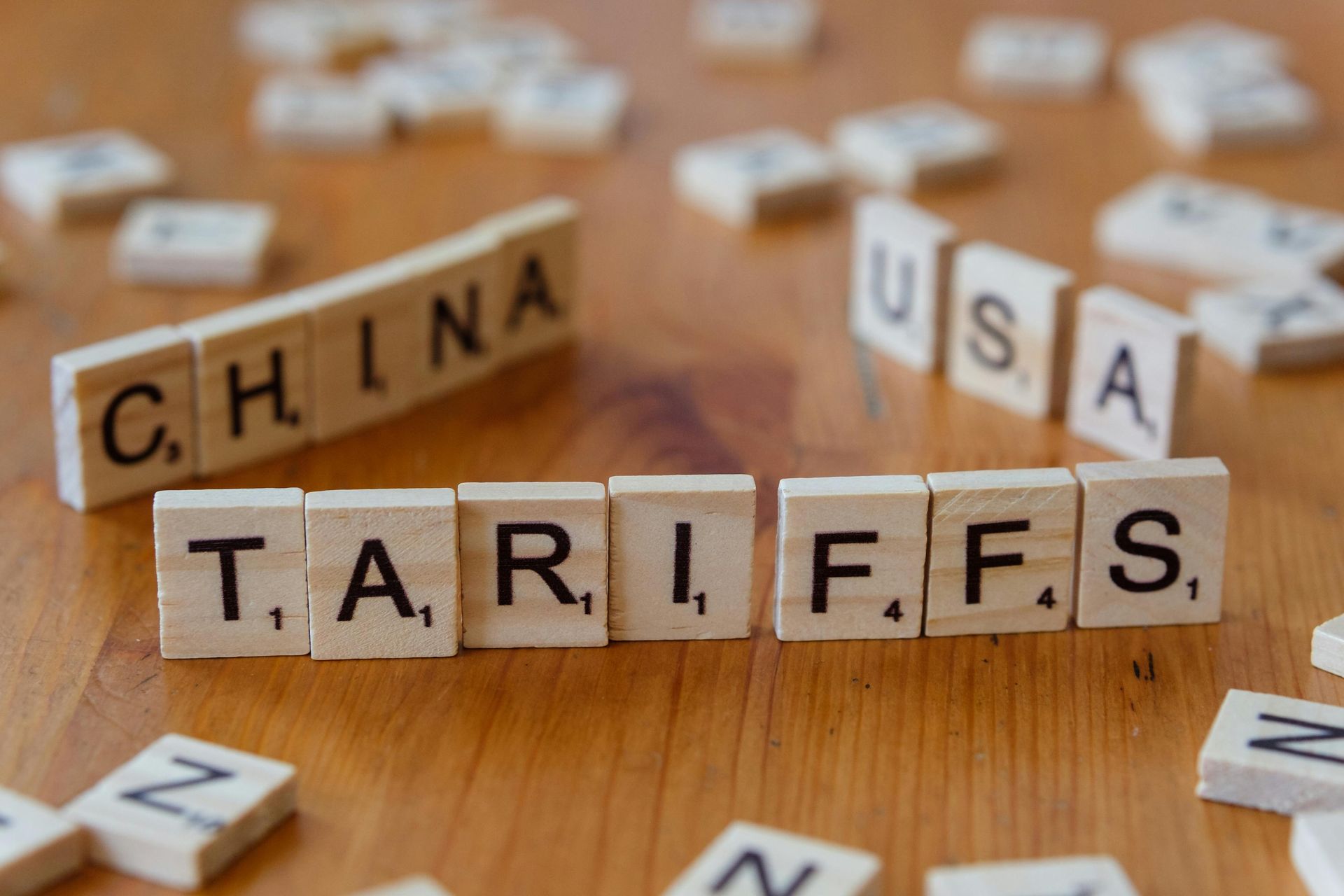Trade wars and tariffs
Clarke McEwan Accountants

Global Google searches for the word “tariffs” spiked dramatically between 30 January and 2 February 2025, a +900% increase to the previous 12 months. We look at what tariffs really mean.
Who pays for tariffs?
Tariffs increase the price of imported goods and reduce trade flows of that good or service.
Traditionally used to protect specific domestic industries by reducing competition, tariffs increase the price of foreign competitors and reduce demand. In his first term, President Trump imposed a 25% global tariff on steel and a 10% tariff on aluminium (which Australia managed to reduce to zero with supply limits imposed instead). The impact was reportedly a 2.4% increase in the price of aluminium and 1.6% increase in the price of steel in the domestic US market. The cost of tariffs is not borne by overseas suppliers but indirectly through a reduction in trade and domestically through higher prices, particularly where those goods and services are common.
For the US however, the negative impact of tariffs will be felt less abruptly than many of its trading partners as trade only represents around 24% of US gross domestic product (GDP) – whereas trade accounts for 67% of Canda’s GDP.
Where we are at with US trade tariffs
While talking to shock jock Joe Rogan during his election campaign, Donald Trump stated, “this country can become rich with the proper use of tariffs.”
In his second week of office, President Trump used emergency powers to curb the “extraordinary threat” of illegal aliens, drugs and fentanyl into the US, by imposing the following tariffs:
· Canada - 25% additional tariff on imports from Canada (except energy resources that have a reduced 10% additional tariff). Canada responded by imposing its own 25% tariffs on a range of predominantly agricultural products and household goods. Canada is a trading nation and exports represent two-thirds of its GDP. In 2023, the US represented 77% of Canada’s total goods export.
· Mexico - 25% additional tariff on imports from Mexico. Mexico has responded with its own 25% tariff on US goods.
· China - 20% additional tariff on imports from China. The US trade deficit was over $900bn in 2024 of which China accounts for around $270bn. The additional tariff on postal shipments from China to the US has since been temporarily suspended for items with a value under $800 until the US postal service is able to collect the tariff. China’s response has been to impose additional tariffs on certain US imports including a targeted 15% tariff on agricultural products including chicken, wheat, corn and cotton, and a 10% tariff on fruit, vegetables, dairy products, pork, beef and sorghum. Export controls have been placed on some critical minerals. In addition, China has filed a complaint to the World Trade Organization.
Industry specific tariffs and investigations
· Steel imports – from 12 March 2025, the original 25% steel tariff is set to resume without the bi-lateral agreements reached over time with many nations including Australia watering down the tariff.
· Copper imports – while no actions on tariffs, the President has ordered an investigation into the threat to security of copper imports.
· Imports of timber, lumber products – while no action or impositions as yet, the President has ordered an investigation into the threat to security of imports of timber, lumber and derivative products such as paper.
· US tech giants – it seems that the President is concerned by digital services taxes (DST) imposed on US technology companies and has vowed to respond with tariffs and other measures. Australia does not impose a DST and instead is aligned to the OECD reforms of digital taxing rights.
Will Australia face US tariffs on other goods?
Australia has a large trade surplus with the US which would normally make the imposition of tariffs less likely. However, specific industries may be impacted by product or industry based tariffs, such as steel and aluminium.
The largest American imports into Australia are financial services, travel services, telecoms/ computer/ information services, royalties and trucks. Australia’s largest exports to the US are financial services, gold, sheep/goat meat, transportations services and vaccines.
Impacts of trade wars on Australia
Australia is impacted indirectly by demand. China is Australia's largest two-way trading partner, accounting for 26% of our goods and services trade in 2023. If Chinese demand slows as a result of a trade war, Australia’s economy will slow. But there is a pattern in President Trump’s approach to international and trade relations that suggests that an all-out trade war might not occur: a bold line or policy is stated - a statement that tells a story to the US public consistent with his election sentiments; then, wound back either partially or fully after concessions have been secured or concessions stated. For Australia, there is a risk in these policy machinations that China again agrees to reduce the US trade deficit by purchasing more from the US, potentially to the detriment of Australian suppliers.
For Australian business, uncertainty and volatility is the problem. Uncertainty slows the economy and impacts business revenue while at the same time, costs may increase.
For those in the business of selling product manufactured and distributed from China or through other trading partners directly impacted by tariffs, watch for more supply chain issues and potential cost increases.
If the US export markets retracts, there is also a risk other trading nations look to dump their products to help offset losses.







